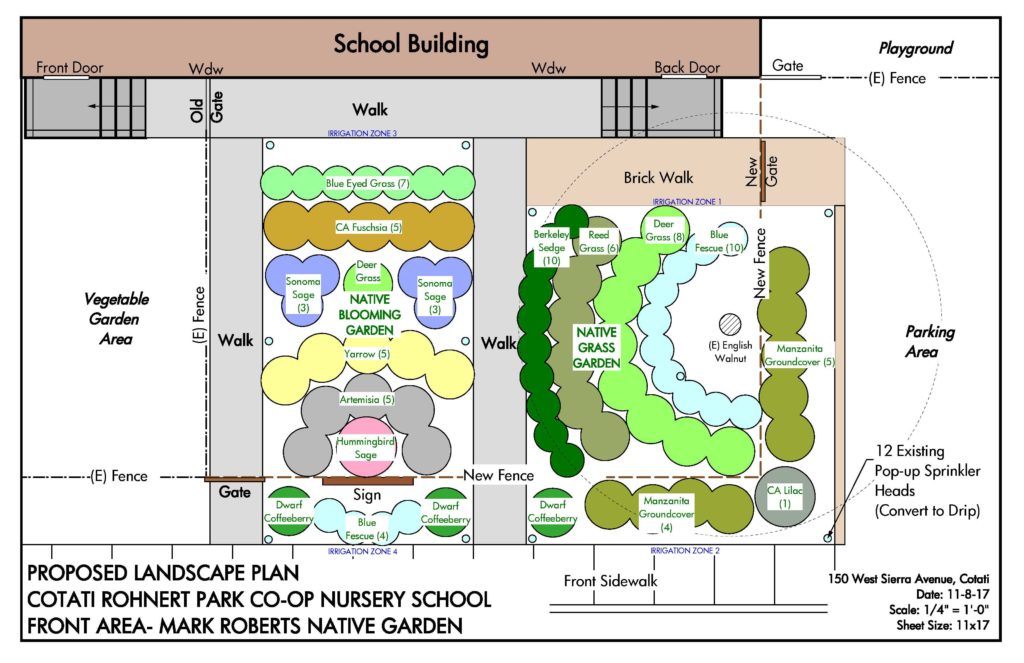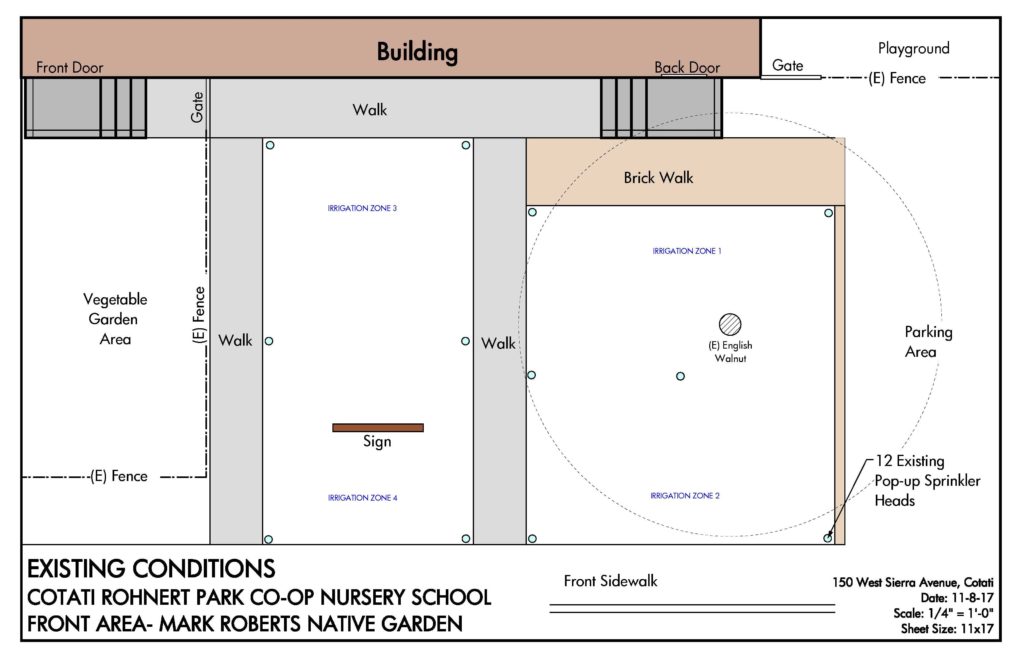This post gives an overview of a volunteer project at the Cotati Co-op Preschool-

Work Scope: The work scope would involve two distinct phases. First would be new plantings, which would require the following steps-
- Remove existing plantings
- Cap and convert existing spray irrigation to drip irrigation
- Prep and grade new beds
- Plant new plantings with amended soil and slow release fertilizer
- Install new drip irrigation tubing and emitters to all newly installed plants
- Install a thick new layer of bark to finish the area, retain moisture, hide drip tubing, and reduce weeds
- Install botanical signs giving the common and latin names of newly installed plants.
Fencing Phase: The second phase would be to install a new extension of the perimeter fence to encompass both entry walkways from the front sidewalk, all the way to the parking area. This would have the benefit of enclosing the entire front of the school in a secure yard area and has been on Sherry’s wish list. As part of this work, the existing sign would need to be either relocated closer to the street, or replaced with a higher visibility sign that would face West Sierra Avenue.
Timing: Work would take place over winter break and be completed either sometime in December or January. I estimate 3-4 volunteer days being required for the planting phase, depending on the number of volunteers we have.
I look forward to discussing this more next week.
Michael O’Connell, O’Connell Landscape
(Zoe O’Connell, Butterflies)

